Parents are understandably concerned about the safety of their children at school in the wake of COVID-19. The best available evidence indicates if children become infected, they are far less likely to suffer severe symptoms.[1],[2],[3] Death rates among school-aged children are much lower than among adults. At the same time, the harms attributed to closed schools on the social, emotional, and behavioral health, economic well-being, and academic achievement of children, in both the short- and long-term, are well-known and significant. Further, the lack of in-person educational options disproportionately harms low-income and minority children and those living with disabilities. These students are far less likely to have access to private instruction and care and far more likely to rely on key school-supported resources like food programs, special education services, counseling, and after-school programs to meet basic developmental needs.[4]Seems pretty clear, right? For whatever reason, Oregon's Governor Kate Brown isn't listening and has instead tethered the ability of Oregon's kids to return to in-person learning to an absurd metric with no science behind it. I hope my fellow Oregonians will take the time to understand what's going on and let their voice be heard.
Aside from a child's home, no other setting has more influence on a child's health and well-being than their school.
What's Virus Positivity Rate?
In early April, a metric was introduced into the public realm by the White House's Dr. Deborah Birx: "virus positivity rate", or "VPR." It's a relatively simple concept: you take the number of positive COVID-19 tests in a given time period and divide it by the total tests given in that same time period and you get a number, expressed as a percentage, that tells you what percent of COVID-19 tests given were positive. When The Hill covered this topic in April, here was the explanation given for the metric's potential utility:
Why is this measure important? While much attention has been placed on the number of tests being conducted, the proportion of tests that come back positive can offer both a broader and more detailed view of the pandemicIn the same article, however, Dr. Asish Jha of Harvard mentioned some of the ways he thinks VPR can be used that left me scratching my head, read this passage and see what you think:
The metric can also be read as an indicator that the country is not doing enough testing.So, wait, VPR can tell you when you aren't doing enough testing? And, if the rate increases, it doesn't mean more virus is out there, it means tests aren't ramping up fast enough? So, is he saying that VPR can't be used to gauge the course of the virus but its purpose is simply to measure the robustness of testing? Re-read his quote and then answer me this: are you confused yet? I sure am. Luckily, The Hill quoted one doctor who seemed to have a better grasp of reality, Jeffrey Martin of UCSF, and what he said is so important I'm going to keep coming back to it in this article. Read on:
Nationally, the positivity rate of coronavirus tests is about 20 percent. Ashish Jha, director of the Harvard Global Health Institute, said that is "absolutely" a sign of insufficient testing.
He also noted that the positivity rate has increased in the past two weeks, an indication that the U.S. is not ramping up its total number of tests fast enough to keep pace with the spreading virus.
"A very high percent positive rate means you're probably missing a lot of people who have the disease," he said, suggesting New York may have even more unconfirmed cases.
But in places such as Los Angeles, where the rate is much lower, that is a sign "there probably aren't a lot of cases that I'm not seeing."
The positivity rate certainly has its limits as a metric, though, mainly because it depends in large part on who is getting tested. The bulk of testing is not being carried out in a systematic or randomized way. We need smart coronavirus testing, not just more testing. That would best answer questions such as how far the virus has spread in a community. "It can be so strongly influenced by just exactly what are the criteria for testing," said Jeffrey Martin, a professor of epidemiology and biostatistics at the University of California San Francisco. He said better metrics for the severity of an outbreak are deaths and intensive care unit admissions.Sanity returns! If your testing isn't systematic, the positivity rate means nothing. Farzad Mostashari, a public health expert, provided even more clarity:
To help improve the reliability of the positivity rate, Mostashari called for comparing test results from a "consistent setting," such as the emergency room, as a more standardized metric than the current "haphazard" testing analysis.For you stat nerds, Dr. Mostashari, who happens to be the former assistant commissioner of the New York City Department of Public Health, penned one of the most important articles about testing data that no one has paid attention to in Stat News titled, "We need smart coronavirus testing, not just more testing," where he made a number of obvious points that you never see discussed:
Mostashari, CEO of the health care company Aledade and a former New York health official, called for "testing consistently in those places apples to apples and then [comparing the] positivity rate."
"...we need a sero survey of multiple communities. Such studies test blood samples from randomly chosen individuals in a defined population. This is the way to assess the real percentage of people in a community who test positive for recent coronavirus infection. This gives a picture that is wider than just the individuals who are bringing themselves in for testing."Oregon's VPR is random and therefore useless
So, what in the world does all this have to do with Oregon? Last week, Governor Kate Brown laid out metrics that must be met before schools can be opened again. What was the only statewide metric mentioned? VPR (referred to as "test positivity"). Specifically, Governor Brown said the following:
The metrics above must be met before ANY children in Oregon can return to school in person. As you can see, not only does any county need a minimum of 7 days in a row of being below a 5% VPR, but the whole state must also be below that rate for three straight weeks. This raises many obvious questions, most of which were mentioned by the experts I quoted above. Which led me to ask a simple question, "does Oregon's data, by county, appear to show the consistent application of testing between counties, the kind of testing that allows for apples-to-apples comparisons?"
So, I did something simple, I looked at the data on VPR that Oregon posts every week and I used a really simple methodology: I looked for any data that felt like it must be an outlier. Why? Because if there was a lot of outlier data, it means Oregon is violating the very thing the experts warned about: inconsistent collection criteria. Put simply, imagine if one county only tests people who have symptoms of COVID-19 while a different county puts free testing sites in every parking lot of Wal-Mart. Do you think their VPR would be different? And, at what point would these difference be so absurd as to render the VPR meaningless? Well, let's look at the data that Oregon just published. I have circled in red some of the data that looks like outlier data. You be the judge.
Let's blow up one of the four pages of data the state provides us with, you can see how absurd some of this data is if you just trace it week-to-week:
Look at Gilliam County, their reporting rate shows, by week, a VPR that moves from 0.0% to 0.0% to 11.8% to 0.0%. Or Harney County: 0.0% to 3.2% to 13.2% to 0.0%. Or Jefferson County, with dramatically higher VPR than the rest of the state. Either they are having a unique outbreak, or they only test people with symptoms, which is it? The truth is, MOST counties appear to have aberrational data, to the point where there's only one reasonable conclusion to draw:
There is a ZERO percent chance that testing in Oregon is being done in a systematic way. The range of data between counties for both VPR and cases per 100,000 is simply astounding. And, this is the primary metric being used to keep our children out of school. It's profoundly irresponsible and certainly not science-based to rely on data that is clearly not being collected in a systematic way across the state.
There's a quote from the experts I cited above that you may have missed. It's so important that I'm going to re-highlight it here From Dr. Jeffrey Martin at UCSF:
He said better metrics for the severity of an outbreak are deaths and intensive care unit admissions.Oregon's hospitalization and death data
Before I go through the data in Oregon that Dr. Thomas highlighted, I wanted you to look at Oregon's actually number of tests given, over time:
What do I see in this testing data? The number of tests given in Oregon over time has grown dramatically and is very inconsistent, which matches the incredibly wide range of VPI and cases per 100,000 data I just showed you. Said differently, the data is a total mess and I don't know what in the world anyone thinks they can glean from it. In July, we gave 7-times as many tests as we did in April. What a shock, we have more positive cases per 100,000 now!
Hospital capacity
Meanwhile, the whole reason we had a lockdown in the first place — to allow room in the hospitals to treat the sick — looks incredible in Oregon.
And, from a different perspective we are swimming in hospital capacity with only 5.9% of ICU beds in use by COVID-19 patients.
And, one last look, barely anyone is going to the emergency room with COVID-like symptoms:
Deaths
As I have written about extensively, the proper way to measure the arc of a virus is with a death curve. Here's the national death curve for COVID-19 right now in the U.S., arrayed by age. Do you notice anything? Yes, despite what you might have read, this virus has effectively run its course:
In Oregon, deaths have been so minuscule we don't have a real death curve, because we have had so many days with zero or single digit deaths, but look here for how we stack up nationally.
Not only is Oregon 46th in terms of deaths per capita, which is great, but there are other states with more than 20x as many deaths per capita as we have — and many of them will be opening their schools!!
(Note: there will be a portion of people who read this article and say that the only reason Oregon has such a low death rate is because of how we have locked down and that to reopen schools will invite a dramatic rise in cases and deaths. This is simply unsupported by the data. There is no evidence lockdowns have any impact on the course of the virus, and look at some of the U.S. states with extremely high death rates. Some had extensive lockdowns, some had none, and the data around the world is even more conclusive showing lockdowns have no impact.)
The science on school openings
We've lost all perspective, and state authorities aren't helping. Did you know that, under the age of 24, you are more likely to die if you catch the flu than COVID-19?
Moreover, the science on the real world where countries have re-opened schools is extremely encouraging. This excellent article by Yinon Weiss explains it so perfectly, I'm just going to quote him:
While controversial to some, Sweden's policy of keeping primary schools open even at the height of the pandemic serves as an excellent counterpoint. With over 1 million children, Sweden did not have a single death of a school-aged child despite full attendance and no masks.But what about the teachers? Aren't they at risk of getting COVID-19 from students. Again, I will return to Mr. Weiss:
Sweden is not alone in sending kids to school. Denmark opened its schools back up in April. Finland kept normal class sizes when it reopened. Parts of Montana opened schools back in May, as did parts of Canada and Germany. The Netherlands announced that Dutch students didn't even need to socially distance anymore as they experienced very low transmission rates. Schools all across Europe have reopened successfully, both with and without masks. The risk to the children themselves therefore cannot be used as a justification for the massive damage created by ceasing in-person education
Science magazine, a preeminent journal that dates to 1880, recently published a comprehensive analysis studying school reopenings around the world and concluded that "younger children rarely spread the virus to one another or bring it home."In Conclusion
A study in Switzerland, including a review of World Health Organization contact tracing, failed to find evidence of a single case of a child passing coronavirus to an adult. A comprehensive study in Iceland isolated SARS-CoV-2 samples from every positive case, sequenced the virus genome, and tracked the mutation patterns. This analysis, along with contact tracing, allowed researchers to identify definitively who passed the virus to whom. The study concluded "[E]ven if children do get infected, they are less likely to transmit the disease to others than adults. We have not found a single instance of a child infecting parents." A study of schools in Ireland found "no evidence of secondary transmission of COVID-19 from children attending school."
New Zealand conducted a study across 15 schools in which 18 individuals with COVID-19 were in close contact with 735 other students and 128 staff members, yet no teacher or staff member contacted COVID-19 from any of the initial 18 cases and only two students out of the 735 would later test positive. The New Zealand study concluded: "Our investigation found no evidence of children infecting teachers."...Denmark, The Netherlands, Finland, Belgium, and Austria all opened schools and "found no evidence of increased spread of the novel coronavirus after schools reopened." The same was found in scientific studies in France, Sweden, and Germany. A leading British epidemiologist goes even further to claim there is not a single known case of a teacher being infected of coronavirus from a student anywhere in the world.
The CDC is encouraging states to re-open schools because leaving children at home has so many negative consequences. Despite Oregon having extremely low numbers on two metrics that really matter: 1) Hospitalizations and 2) Deaths, Oregon's Governor Kate Brown has decided that Oregon children won't be able to return to school until an extremely unreliable metric — Virus Positivity Rate (a.k.a., Test Positivity Rate) — is met at specific thresholds throughout the state and within any one county. A closer look at Oregon's data shows that VPR is an unreliable metric and it's highly likely that tests are being administered with different criteria in different counties, making a complete mess of the data.
Why Governor Brown, despite compelling science showing how low-risk school openings have been in other countries, is choosing these standards is a mystery. Many other states with higher metrics than Oregon are opening their schools. Where is Governor Brown getting her guidance? And why does it make so little sense? Where's the science behind the decision, and who is measuring the impact that keeping kids at home will have on the overall health of Oregonians? I hope you will find your representative in Oregon, share this article, and ask them to help get our kids back in school.
J.B. Handley is the best-selling author of How to End the Autism Epidemic. He graduated with honors from Stanford University, and currently serves as a Managing member of Bochi Investments, a private investment firm. He has written three articles about the lockdowns, Lockdown Lunacy 1.0, 2.0, and 3.0. He can be reached at jbhandleyblog@gmail.com


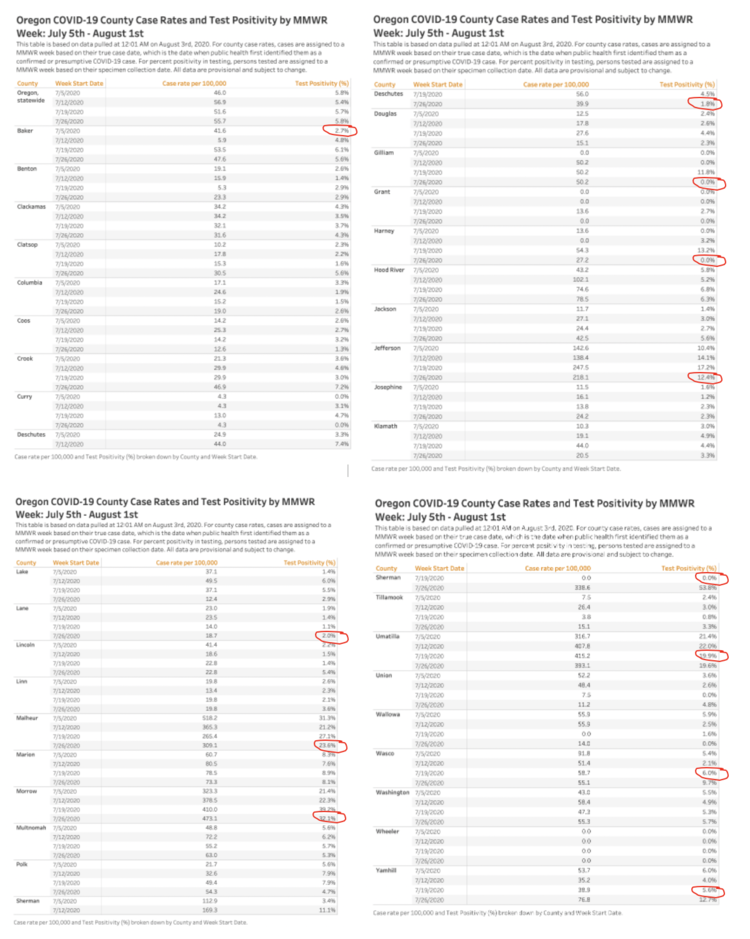

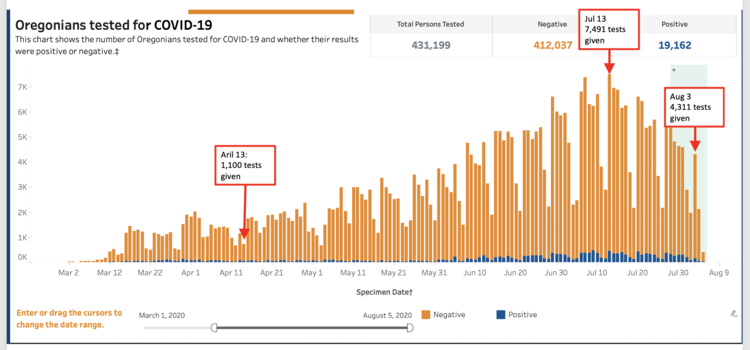
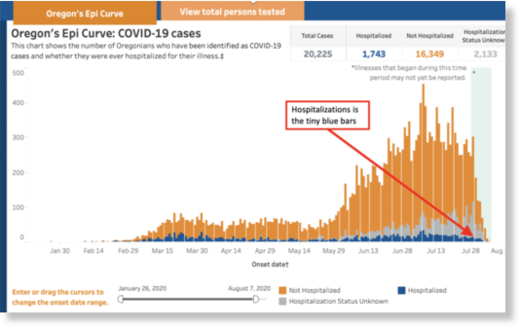
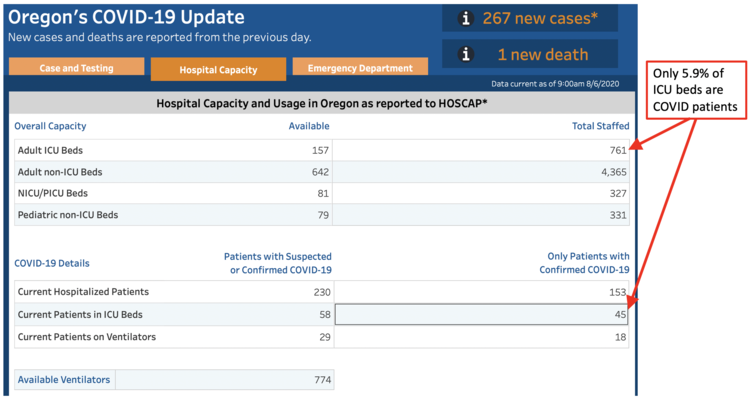
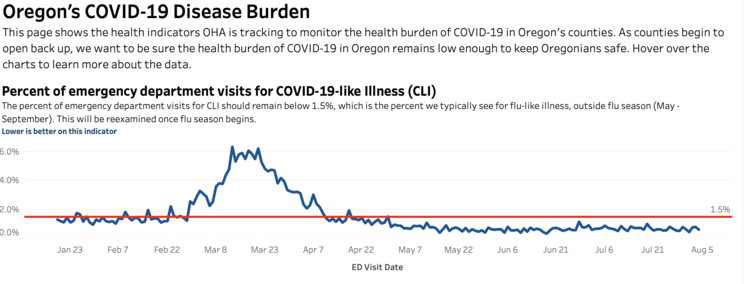
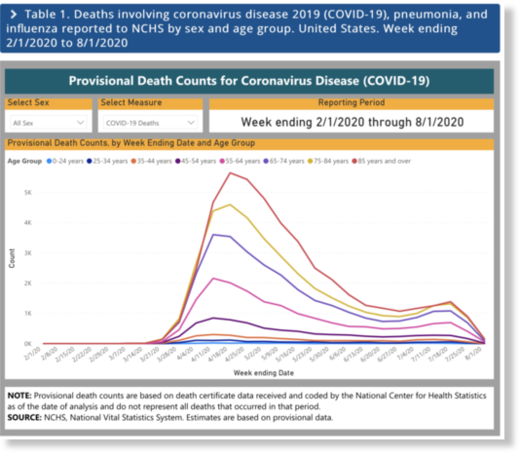
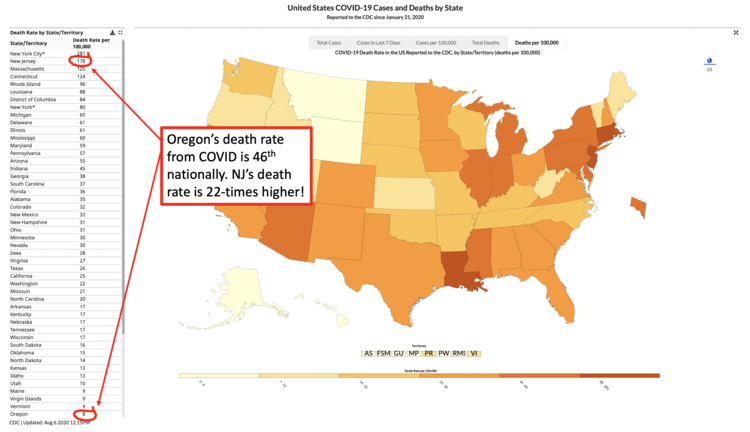

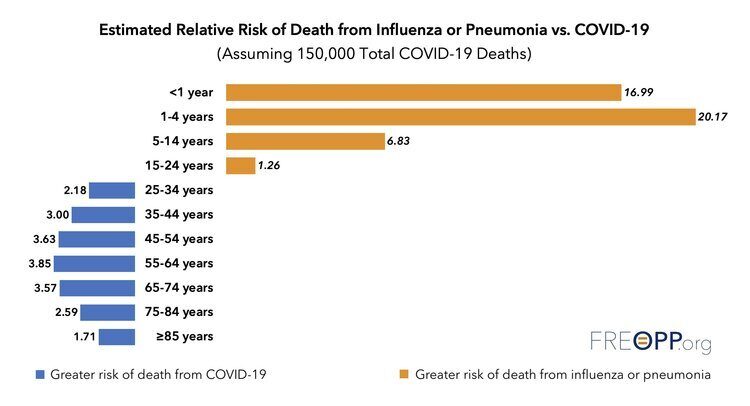



J.B. Handley is a good Oregon-based writer writer and SOTT has published his work on the "pandemic" before.